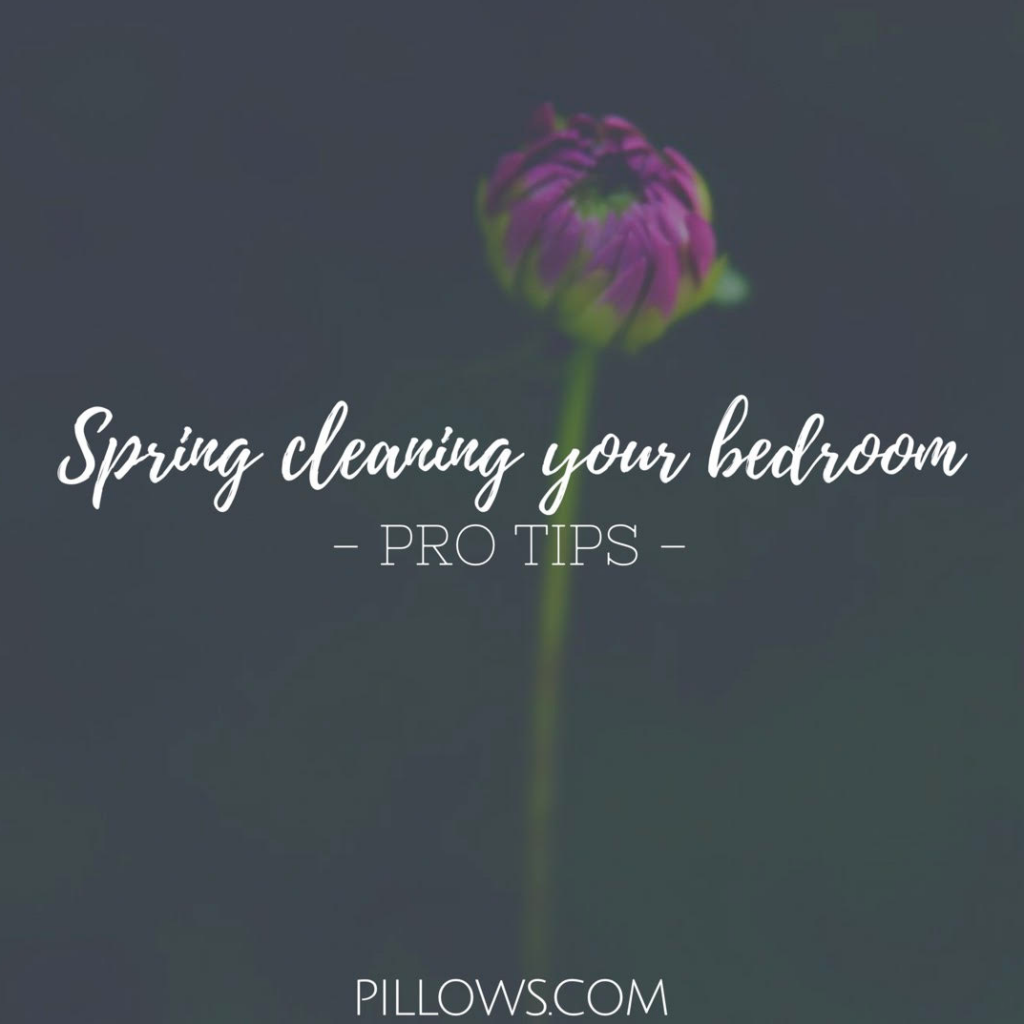It’s springtime! The wintertime freeze is thawing, the birds are chirping, and you may have the urge to open up your windows and let in some fresh air. Something about the season makes everything feel new, and it spurs on a frenzy of spring cleaning, especially the moment that ray of sunlight hits the room to reveal the layer of dust that has accumulated over the winter. Pace yourself. There is no need to take on the whole house for a spring-cleaning overhaul all in one fell swoop. Tackle one room at a time. A good place to make a clean start is in the room where you sleep. You will be able to venture outside to soak up the outdoor freshness in no time after you spring clean your bedroom like a pro with these helpful tips:
Make your bed an inviting, cozy, and clean place to spend the night – Before you begin to clean up the entire bedroom, get started by making sure the bedding is clean. Better yet, freshen up your bed with brand new bedding, a fluffy new comforter, a fresh set of sheets, and don’t forget to buy a new pillow. Even if you refresh your bed with new bedding, you may want to run them through the wash before you cozy up for the night. While you’re waiting for the wash to finish, move onto other corners of the room. Follow the instructions of the labels, and toss in some tennis balls into the dryer when you go to dry the pillows to fluff them up a bit.
Yes, we do windows – But, maybe just in the spring – While your bedding is being cleaned, begin cleaning the frame of your room with the walls and windows, and then move to the furnishings. Start dusting top to bottom so as not to knock dust on an already cleaned area. Remove curtains for cleaning. Dust the corners, and slip an old pillowcase over the ceiling fan blades to catch excess falling dust before it hits the bed below and then wipe the blades down with a damp cloth. If the lights have glass covers, remove them and soak them in the sink while you go about wiping down the walls and cleaning the windows with a water and vinegar mixture or your choice of glass cleaners. Don’t forget the window sills, light switches, and door knobs. Vacuum the outside cover and inside heating and air conditioning vents. For hard-to-reach spots, use vacuum extensions or a cotton mop with a long handle. Once you’re done with the frame of the room, move in to dust the furniture, doors, lamps and other bedroom accessories, and remove everything from dresser or nightstand tops to clean the surfaces before neatly returning knick-knacks to their decorative places. When all of the dusting is complete, finish off by vacuuming the mattress using special attachments to get into the seams and crevices, dust with baking soda to keep it fresh and then flip the mattress. Pillow top mattresses may do better to be flipped from head to toe rather than upside down. If you flip the downside up, repeat the vacuuming process for the underside that is now the top.
Closet and Storage Clean Out – Springtime is also a great time to go through your wardrobe and make sure it’s season ready and up to date in terms of fashion and size. If you haven’t worn something for months, or it no longer fits, it may be time to donate it to charity or sell it at a resell shop or online. Go through your closet, and create a box of items to get rid of and a pile of items to keep. Before you put the keep pile back onto hangars or tucked away in drawers, vaccum the entire closet and get into the crevices of the drawers. Wipe down closet shelves before returning the wanted clothing neatly back in place.
Bottom Line – Now it’s time to get to the bottom of things by cleaning the floors. Vacuum the closet floor thoroughly, and move around the bed and furnishings in the room. For wood floors, use any special attachments for your vacuum or sweep well and mop. Be sure to get into the corners well, and use a vacuum extension to get under the bed. For area rugs, vacuum or enjoy some fresh outside air by taking the rug outside to beat it. Sprinkle a little baking soda on the carpet to fresh it up, let it sit for a few minutes before vacuuming it up. Don’t forget the baseboards.
Now, your bedroom is tidy and clean from top to bottom and your bed is made with fresh, clean linens and a new fluffy pillow which will feel good after a hard day’s work of spring cleaning. What more could you hope for to start your spring off refreshed and ready to soak up some springtime air after a good night’s rest in a clean bedroom.











